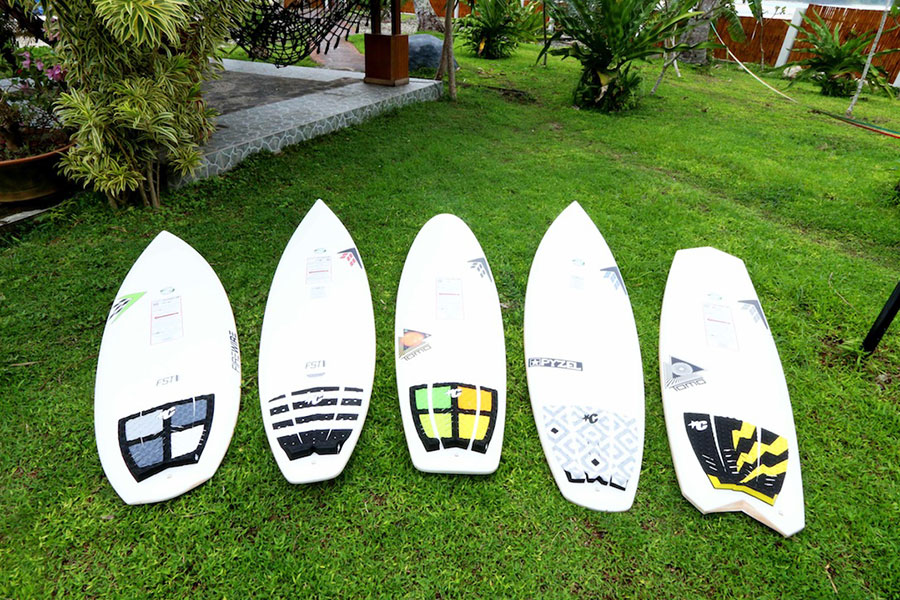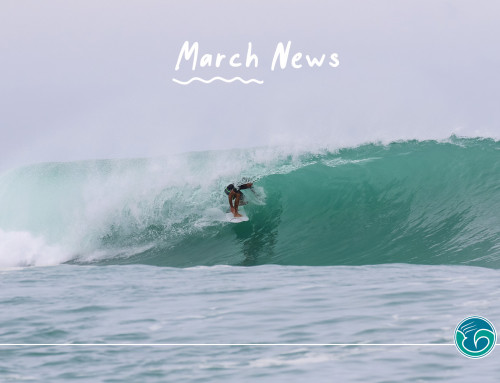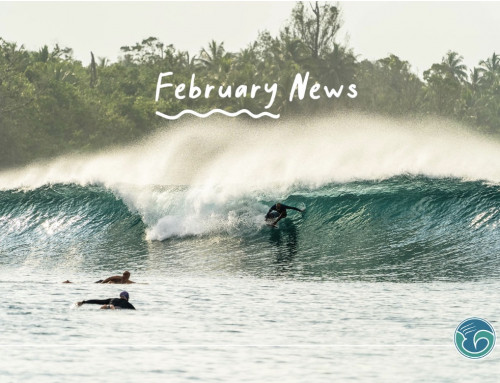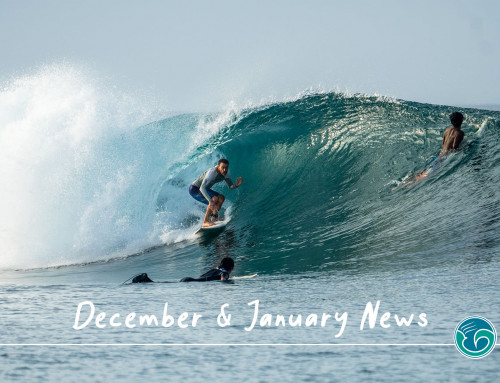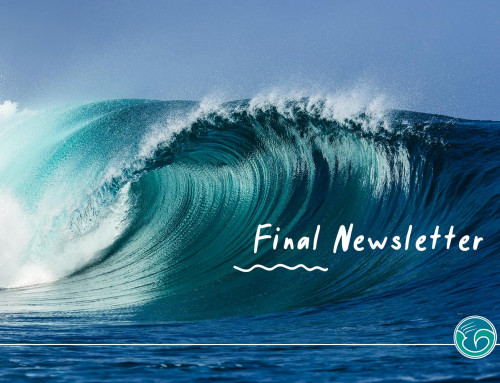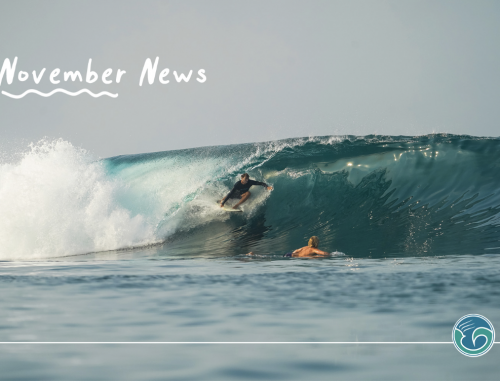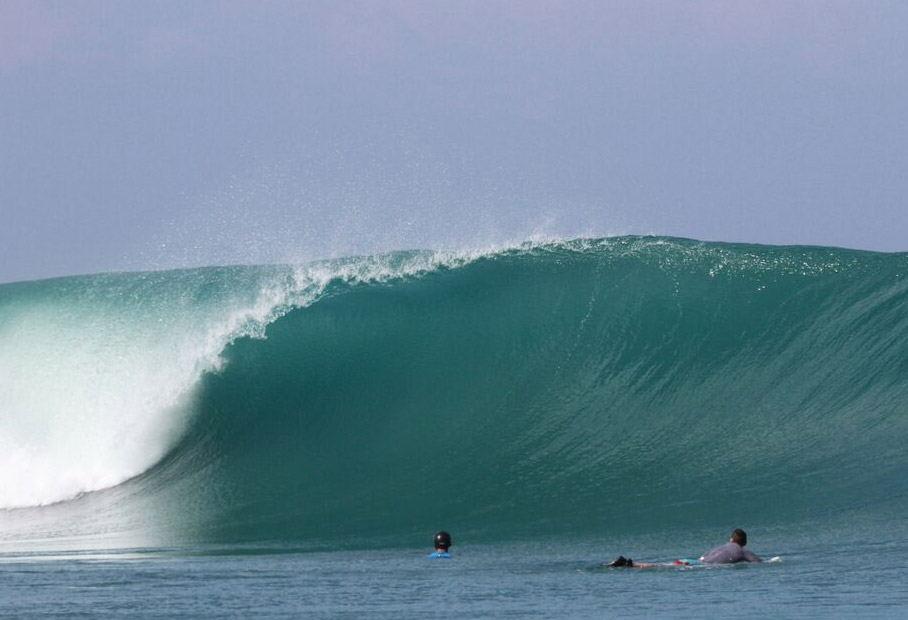University of Wollongong Research Trip
Professor Marc in het Panhuis and a team from the University of Wollongong visited Macaronis in May to conduct research and development testing on new designs for surfboard fins. They took 6 surfers and 3 researchers to test a range of new University of Wollongong designed 3D printed surfboard fins and compare them with commercially available surf fins (from 2 main stream producers). They tested 3 different prototype fins that were 3D printed, with some of them having design features similar in appearance to “crinkle cut crisps”. They refer to the fins as crinkle cut fins.
The main outcome of the study is that the University of Wollongong team designed and manufactured fins that surfers really like. These fins have design features similar in appearance to crinkle cut crisps. The data surprised the researchers as the majority of surfers preferred these crinkle cut fins over the other prototypes and commercial fins.
The team did not expect that there would be overall agreement as the surfers varied in style (goofy vs. natural), age (20s to late 30s), height (5’8” to 6’5”) and weight (65 kg to 100 kg).
The research team came to the Macaronis Ocean Laboratory to validate the designs of their fins and compare their performance to commercial fins. The designs were developed using a performance-feedback loop that involves a unique combination of computational fluid dynamics, computer aided design, 3D printing, Internet-of-Things (cloud-based data processing), and surfers’ feedback from surfing waves.
Macaronis Ocean Laboratory
The Macaronis wave or “Macaronis Ocean Laboratory” as the research team call it was carefully selected as they needed a mechanical wave that consistently breaks on most swells, tides and under most wind conditions. An additional requirement was long walls that can maximise the surfers potential to do as many turns as possible for the data collection. Macaronis ticks all of those boxes!!!!! The University of Wollongong research team love the Macaronis Ocean Laboratory.
The Approach
They went about this testing by providing each of the 6 research team surfers with 2 identical boards shaped by shaper Dylan Perese (DP Surfboards, Australia). Of course, the volume and length of the boards was to suit the rider, but the other characteristics of the surfboard (e.g. shape, tail, glassing, rail) were all standardised.
Each surfer was kitted out with 2 wearable GPS tracking devices, while a 3rd tracking device was embedded in the surfboard. In addition, most of the waves were photographed and filmed from various angles.
The surfers were then sent out in groups of 3 to test each of the 4 prototypes in a randomised order. The fins were fitted to the boards without the surfers seeing what fin type was inserted. Each surfer was then told to complete a number of turns before coming in to change fins. They were given the specific instruction to avoid getting barrelled during testing! During the changeover of the fins the surfers’ subjective experiences (hold, pivot, feel, stiffness, leg burn and many more) were recorded in a scientific manner.
Each fin type was tested by each of the 6 surfers over 6 days. This has resulted in a wealth of data! The subjective experiences are being compared to the data from the 3 different tracking devices. These devices tracked everything from wave count, average and maximum speed, number of turns to more detailed information such as the amount of rail engaged during bottom and top turns (to name but a few of the large amount of performance parameters).
The Results
While the team is still evaluating the results, they came back from the Macaronis Ocean Laboratory with one clear favourite fin! The crinkle cut fin. So far the team has observed the following. Surfer were riding the waves for distances of up to 230 m, and we are to perform up to 11 turns per wave. Preliminary analysis of the subjective data demonstrated that the majority of the surfers felt that they went fastests on the crinkle fins. Analysis of the data from the 3 sensors systems confirmed this observation, i.e. the majority of the surfers logged their highest speed on waves surfed with the crinkle cut fins.
The Macaronis Experience
The whole experience was amazing. Even though the team was in an exotic location with one of the best waves in the world in the backyard, there was a lot of scientific research work being conducted. The team tracked and counted more than 450 waves and 1800 turns in all types of weather conditions over six days for up to 6 hours per day rocking around in a boat in the ocean swell.
The team loved staying and surfing at the Macaronis resort. It was the perfect location and facility to do fieldwork for surfing. The staff was all amazing and helpful. There are not enough words to describe the experience. You have to see this with your own eyes.
One of the more humbling experiences was when the team visited the local school and donated educational materials. It was both humbling and joyful for them to interact with the local children. They had a very enjoyable time there and it made them realise how lucky they are in Australia.
The team were highly impressed with the approach and responsibility that Macaronis resort take with respect to the village and its people.

